Reducing Eyelid Swelling: Causes, Symptoms, and Home Remedies
What causes swollen eyelids? How can you fix them quickly? Explore the common and less common medical conditions behind eye swelling, along with effective home treatments and when to seek professional help.
Understanding Swollen Eyelids
Swollen eyelids are a common occurrence that can have a variety of causes, ranging from allergies and irritation to more serious medical conditions. It’s important to be able to identify the underlying reason for the swelling in order to properly manage and treat the problem.
Common Causes of Swollen Eyelids
Some of the most common causes of swollen eyelids include:
- Contact Allergy: Getting a particle of dust, pollen, or pet dander in the eye can cause irritation and swelling.
- Widespread Allergy: Allergies to plants, animals, or dust can lead to frequent eye puffiness, redness, and itchiness.
- Eye Irritation: Getting makeup or dirt in the eye can temporarily cause swelling and puffiness.
- Blepharitis: An infection of the tissues around the eye, which can also be associated with the herpes simplex virus.
- Chalazion: The enlargement of an oil gland inside the eyelid, typically affecting only one eye.
- Conjunctivitis (Pink Eye): A contagious eye infection characterized by redness, discharge, and sometimes crusty eyelashes.
- Stye: A red, inflamed, and painful area in one eyelid, also known as a hordeolum.
- Insect Bite: Itching, redness, and a bump on the eyelid caused by an insect bite.
Less Common Medical Conditions Causing Swollen Eyelids
While the common causes listed above account for the majority of swollen eyelid cases, there are also some less common medical conditions that can lead to this symptom, including:
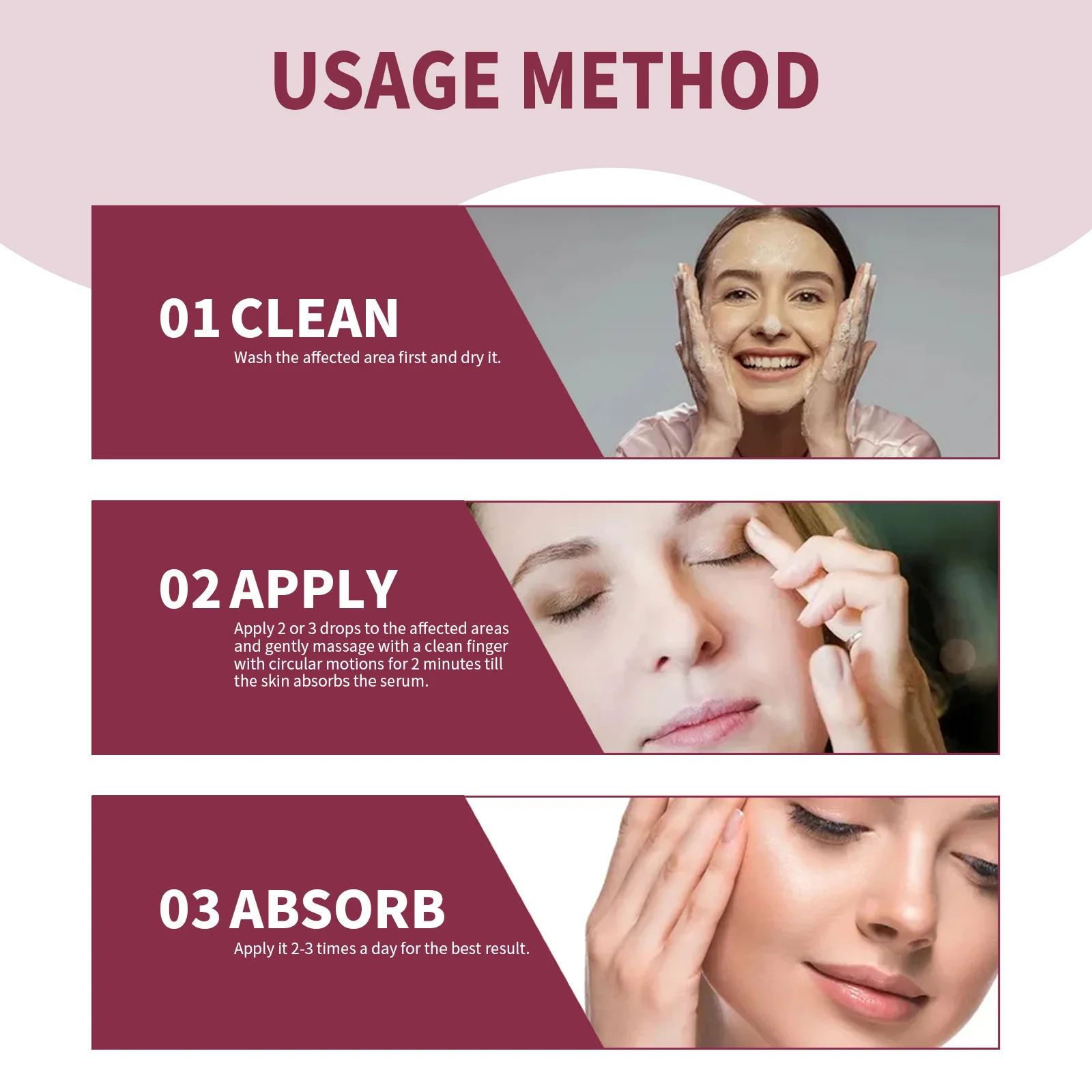
- Thyroid Disorders: Conditions like Graves’ disease can cause the tissues and muscles around the eyes to swell.
- Orbital Cellulitis: A serious bacterial infection of the tissues behind the eye that requires immediate medical treatment.
- Eyelid Edema: Swelling caused by the buildup of excess fluid around the eyes, which can be a sign of an underlying health issue.
- Trauma or Injury: Swollen eyelids can result from physical trauma or injury to the eye area.
Preventing and Treating Swollen Eyelids
For mild cases of swollen eyelids, there are several home remedies that can provide relief:
- Applying a cold compress to the affected eye(s)
- Taking over-the-counter antihistamines or anti-inflammatory medications
- Avoiding potential irritants and allergens
- Gently cleaning the eyelids and removing any makeup or debris
However, if the swelling persists for more than a day or two, or is accompanied by severe symptoms like pain, fever, or vision changes, it’s important to seek medical attention. A healthcare provider can properly diagnose the underlying cause and recommend the appropriate treatment, which may include prescription medications or other interventions.

When to See a Doctor for Swollen Eyelids
While many cases of swollen eyelids can be managed at home, there are certain situations where it’s crucial to seek professional medical care:
- Swelling that lasts more than 1-2 days and does not improve with home treatment
- Severe pain, redness, or warmth in the affected eye(s)
- Fever, chills, or other signs of infection
- Swelling that obstructs vision or causes significant discomfort
- Recurrent or chronic swelling that may indicate an underlying health condition
By understanding the common and less common causes of swollen eyelids, as well as when to seek medical attention, you can effectively manage this often temporary and treatable condition.
Key Takeaways
- Swollen eyelids can have a variety of causes, from allergies and irritation to more serious medical conditions.
- Common causes include contact allergies, widespread allergies, eye irritation, blepharitis, chalazion, conjunctivitis, styes, and insect bites.
- Less common causes include thyroid disorders, orbital cellulitis, eyelid edema, and trauma or injury.
- Home remedies like cold compresses and antihistamines can provide relief for mild cases, but persistent or severe swelling requires medical attention.
- Seeking medical care is important if swelling lasts more than 1-2 days, is accompanied by severe symptoms, or may indicate an underlying health condition.
By understanding the potential causes of swollen eyelids and when to seek professional help, you can effectively manage this common and often temporary condition. Remember, if the swelling persists or worsens, don’t hesitate to consult with a healthcare provider for proper diagnosis and treatment.
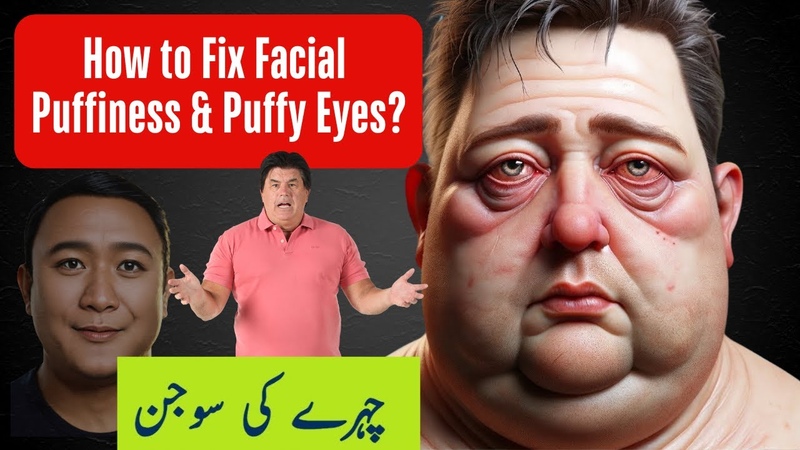
Swollen Eyelids? Causes & How to Fix Them (Fast)
At some point, nearly everyone experiences swollen eyelids from allergies, irritation, inflammation, or infections. It is important to know the symptoms so you know how to manage the problem, but treatment can begin at home for the first day or two.
Table of Contents
- What Causes Swollen Eyelids?
- Common Causes of Swollen Eyelids
- Eye Swelling Scale
- Difference Between Puffy and Swollen
- Less Common Medical Conditions
- Prevention
- Treatment for Eye Swelling
- Get Help
Puffy eyes are often mistaken for swollen eyes, but puffiness can occur for several reasons. Common causes of swollen eyes, not puffy eyes, start with allergies, but include serious infections that need medical treatment. Less common causes of swollen or inflamed eyes are often chronic conditions that require medications and ongoing doctors’ appointments.
The health of your eyes is closely associated with the health of the rest of your body, so understanding swollen eyelids can help you get the treatment you need.
What Causes Swollen Eyelids?
Swelling on eyelids can have several potential causes, which may have other symptoms, depending on how serious the condition is. By themselves, swollen eyelids may be a temporary condition. They can feel uncomfortable or irritating, but they will go away on their own.
Your eyelids may swell when there is inflamed tissue or excessive fluid (edema) around the connective tissues of the eye near the eyeball. The experience may be painful, hot, itchy, or uncomfortable, or it may simply look odd.
Aside from enlarged tissues around your eyes and difficulty moving your eyelids, symptoms associated with swollen eyes include:
- Itching or scratchy sensations in or around your eyes.
- Sensitivity to light.
- Watery eyes.
- Redness in the whites of the eyes.
- Obstructed vision.
- Redness on the skin of the eyelid.
- Discharge from the eye.
- Dryness or flaking skin on or around the eyelid.

- Pain or feeling hot (symptoms of infection).
Common Causes of Swollen Eyelids
Nearly everyone experiences swollen eyelids at some point in their lives. However, there are other common conditions that may be more serious, which require an eye exam for an appropriate diagnosis rather than home treatment.
- Contact allergy: Getting a particle of dust, pollen, or pet dander in your eye can cause a small amount of irritation, which may lead to swelling. If you do not have an overall allergic reaction, swelling and itching will go away on their own. You may benefit from taking an antihistamine to control the inflammation. If swelling does not go away on its own after one or two days, see a doctor. Some tissues in or around your eye may have an infection.
- Widespread allergy: If you struggle with allergies to plants, animals, or dust, you may frequently develop puffy, swollen, red, watery, itchy, or dry eyes. Antihistamines or anti-inflammatory medications can reduce some of these symptoms.
 If you have severe allergies, working with a doctor to manage prescription medications will reduce eye swelling since it is a symptom of your allergies.
If you have severe allergies, working with a doctor to manage prescription medications will reduce eye swelling since it is a symptom of your allergies. - Eye irritation: Getting a particle of makeup or dirt in your eye can temporarily irritate your orbital socket and cause a small amount of puffiness or swelling. Remove contact lenses if you are wearing them, and gently wash your eye out with water or eye drops. Do not put contact lenses back in until swelling has gone away.
- Blepharitis: This may be an infection of the tissues around the eye, or it could be associated with the herpes simplex virus. Along with eyelid swelling, you may notice yellow crust along the eyelashes, itching or burning eyes, redness, and sores. This typically affects both eyes at the same time. A doctor’s examination can determine if blepharitis is causing your symptoms and begin your treatment.
- Chalazion: This is the enlargement of an oil gland inside your eyelid, and it typically affects only one eye at a time.
 You will develop an enlarged, red, sore area that will look like a small mound. Pain will go away first, followed by decreased swelling. A doctor’s examination is required for treatment for a chalazion because it will not go away on its own.
You will develop an enlarged, red, sore area that will look like a small mound. Pain will go away first, followed by decreased swelling. A doctor’s examination is required for treatment for a chalazion because it will not go away on its own. - Conjunctivitis: More commonly known as pink eye, this is an infection characterized by redness, discharge, and sometimes crust on the eyelashes. It can affect one or both eyes, and it may look like an allergic reaction at first. Symptoms will get worse, not better, so see a doctor for medicated eye drops and stop wearing your contact lenses immediately.
- Stye: The medical term for a stye is hordeolum, and this typically is a red, inflamed, painful area in one eyelid. Eventually, the swelling will even out, sometimes with small, raised, pus-filled bumps. Visit a doctor for treatment recommendations if it doesn’t clear in a couple of days.
- Insect bite: Itching, redness, and a small bump suggest you may have been bitten by a bug or insect, but a doctor will be able to accurately distinguish between an insect bite and other potential causes of eyelid swelling.

Eye Swelling Scale
If you have swollen eyes, you can assess the overall severity using an eye swelling scale. This essentially rates the swelling as mild, moderate, or severe.
- Mild: Your eye functions like normal, opening and closing properly, but the eyelid is somewhat puffy.
- Moderate: Your eye is still able to open for the most part, but the swelling is more pronounced.
- Severe: You cannot open your eye properly. The eyelid is almost or fully swollen shut.
If your swelling is mild to moderate on the eye swelling scale, you can often treat the condition at home. If it’s moderate to severe, you should consult a doctor.
The Difference Between Puffy and Swollen Eyelids
Many people may develop “puffy” eyes and think, at first, that their eyelids are swollen. There are some differences between puffy and swollen that are important to keep in mind, however.
Puffy eyes may be inherited, caused by a lack of sleep, or due to crying.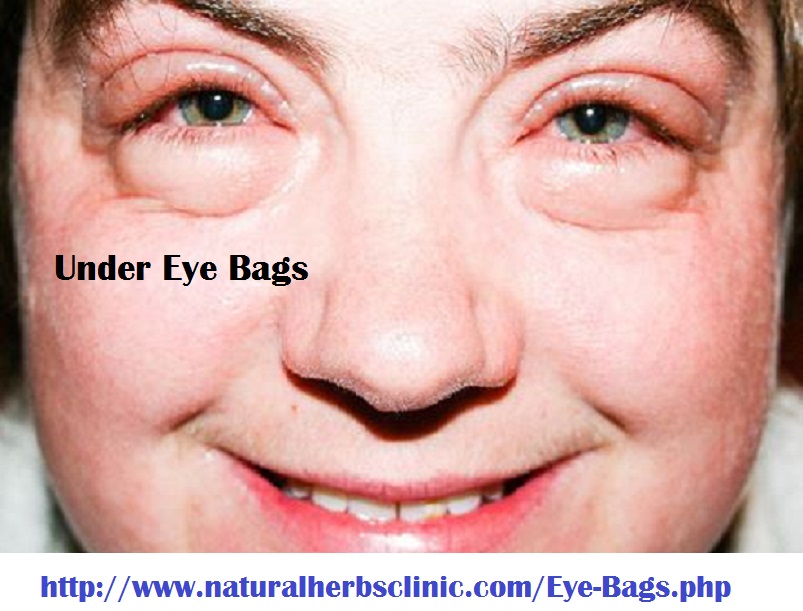 Stress, fatigue, and allergies may all contribute to puffy eyes, which can obstruct your vision and become uncomfortable. Puffy eyes typically do not have other symptoms associated with them, however, and they can be safely treated at home.
Stress, fatigue, and allergies may all contribute to puffy eyes, which can obstruct your vision and become uncomfortable. Puffy eyes typically do not have other symptoms associated with them, however, and they can be safely treated at home.
You may go for a “spa treatment” and place cucumber slices over your eyes; you may use a small amount of Preparation H to reduce swelling; or you could take an antihistamine, which will reduce inflammation all over your body. These at-home treatments for puffiness are safe and effective in the short term.
There are many common causes of puffy eyes.
- Eating too much salt, leading to fluid retention
- Allergies that lead to inflammation
- Irritation around the eyes from cosmetics
- Sinus problems or infection
- Dehydration
- Sleeplessness
- Stress
- Inherited factors
- Aging
- Crying
Puffiness typically goes away on its own and does not have other symptoms associated with it. Swelling in the eyelids, however, can indicate a different underlying condition or a more serious problem with your health.
Swelling in the eyelids, however, can indicate a different underlying condition or a more serious problem with your health.
Understanding the different potential causes of swollen eyes, and the symptoms associated with them, can help you determine when to see a doctor for medical treatment.
Less Common Medical Conditions Associated With Swollen Eyelids
There are several medical conditions that involve swollen eyelids as one symptom. Treatment specifically for this swelling may be home-based, but treating the underlying medical condition is crucial.
- Shingles: This is the same virus that causes chicken pox, which lies dormant after the initial infection but may become active again in adulthood. The most common symptoms are skin rash and pain, particularly along the sides or flanks of the body. In rare cases, you may develop a rash around the face, which can cause swelling in or around your eyelids.
- Orbital cellulitis: Tissue infection in or around the eye socket can present as eyelid swelling.
 This will be accompanied by redness, pain in the eyeball, and bulging eyes. It will start in one eye and spread to the other.
This will be accompanied by redness, pain in the eyeball, and bulging eyes. It will start in one eye and spread to the other. - Preseptal/periorbital cellulitis: Like orbital cellulitis, this is an infection of skin tissue, but it occurs around the outside of the eye rather than the interior tissues. This may be accompanied by pain and fever.
- Hypothyroidism: An underactive thyroid gland mostly causes fatigue and weight changes, but puffy or swollen eyes may be one of several symptoms that your body is not managing hormone production. This requires a doctor’s diagnosis to begin treatment.
- Graves’ disease: The opposite of hypothyroidism, this condition involves an overactive thyroid gland caused by an immune problem. Bulging eyes, double vision, anxiety, weight loss, and rapid heartbeat are all symptoms of Graves’ disease, which can only be diagnosed by a medical professional.
- Systemic disorders (preeclampsia, kidney disease, cardiovascular disease, and liver failure): Edema, or fluid retention, is a symptom of many diseases that affect the whole body.
 The eyes are one of several areas where you may notice unusual swelling.
The eyes are one of several areas where you may notice unusual swelling.
How Can You Prevent Eyelid Swelling?
While you can’t fully prevent eyelid swelling, there are things you can do to reduce the likelihood of it occurring. Here are some tips:
- Maintain good hygiene. Always wash your hands before and after touching your eyes. This makes it less likely that irritants, allergens, or bacteria get into your eye that could lead to swelling.
- Wash your face. Never go to sleep with makeup on your eyes, as this can lead to irritation and potential swelling.
- Stay away from irritants. If you have any known allergies, try to steer clear of them as much as possible. Choose products that are fragrance-free and gentle.
- Avoid rubbing your eyes. Regularly rubbing your eyes can lead to irritation and puffy eyes. Try to keep your hands away from your eyes as much as possible.
Treatment for Eye Swelling
The best way to treat eye swelling will depend on the cause. Your best bet is to consult a doctor to determine the cause and follow their prescribed treatment.
Your best bet is to consult a doctor to determine the cause and follow their prescribed treatment.
If you are experiencing mild swelling, you can try some of these home remedies:
- Apply a cool compress. The cold temperature can help to lessen puffiness and also bring relief from pain and discomfort.
- Try cold, caffeinated teabags. The caffeine in the tea bag will constrict blood vessels in the area, helping to reduce swelling. Make sure the teabags are fully cooled before applying them to your eye area.
- Elevate your head. When you lay down, blood can pool in your head, increasing inflammation. Sleep with your head propped up on pillows to reduce eye swelling.
- Gently cleanse. Keep the area around your eyes clean. Use gentle touch to ensure you don’t irritate your eyes further.
- Use saline solution. Flush your eyes with saline solution to cleanse the area.

- Try anti-inflammatory medications. Over-the-counter anti-inflammatory medications can help to temporarily decrease inflammation, including swelling around the eyes.
Get Help From Medical Professionals for Serious Issues With Swollen Eyelids
The health of your eyes reflects your overall physical health. When a saline solution, cool compress, anti-inflammatory drugs, or any of the other suggestions above do not reduce puffy or swollen eyelids, or the condition is accompanied by a rash, fever, serious itching, redness, or discharge, you should see a doctor.
Infections and inflammation can lead to damage to your eyes and even cause blindness when untreated. Often, swelling that does not go away indicates an underlying medical condition that requires more intensive treatment.
Symptoms of Infection
In some cases, swollen eyelids can be a sign of infection. If you notice these symptoms in addition to swelling, it’s time to see a doctor:
- Redness
- Discharge from the eye, often whitish, yellowish, or greenish
- Discomfort or pain
- Issues with vision
When Will the Swelling Subside?
The duration of eyelid swelling depends on the underlying cause.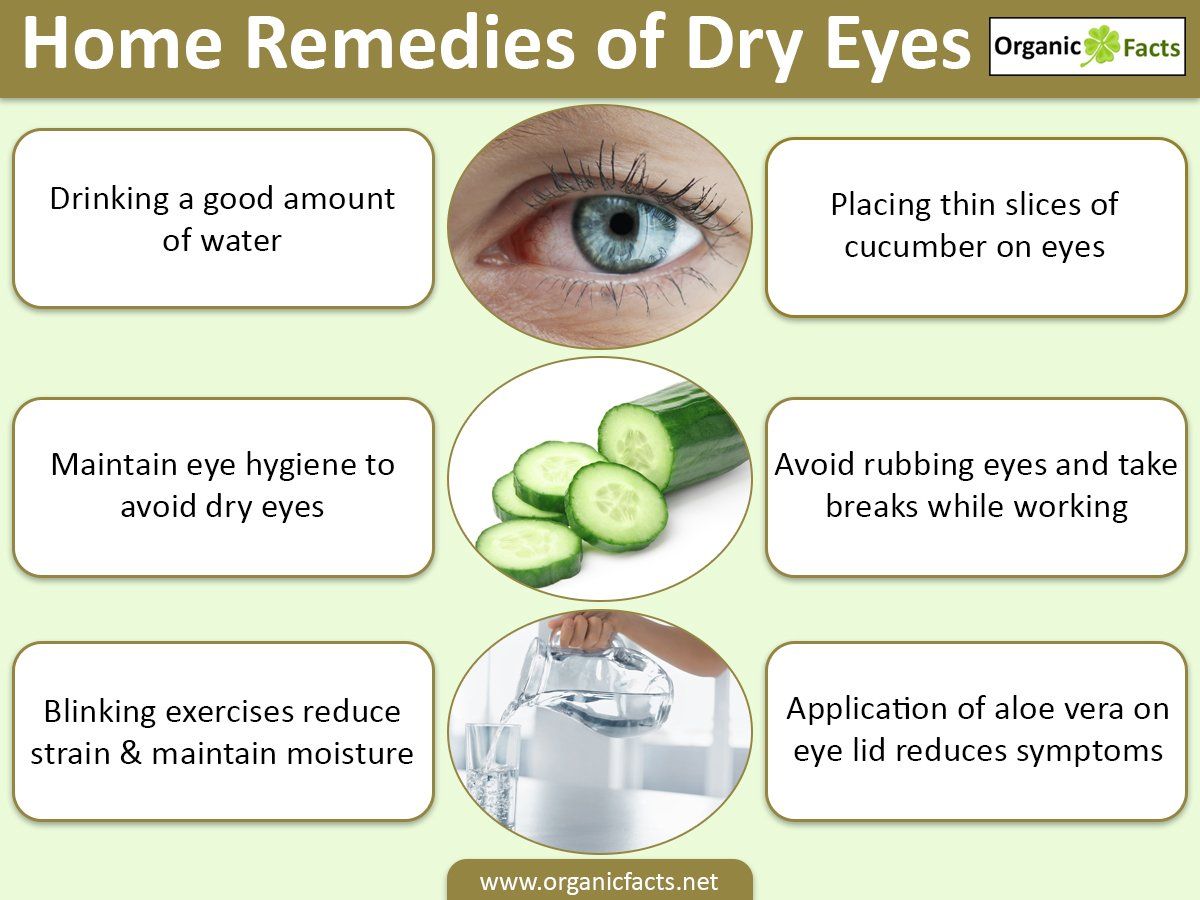 Most often, it should begin to decrease within a day or two. If it persists longer than that, see a doctor.
Most often, it should begin to decrease within a day or two. If it persists longer than that, see a doctor.
References
- Some Causes and Features of Eyelid Swelling. Merck Manual, Consumer Version.
- Puffy Eyes: What Causes Them and What to Do About It. (April 2019). Cleveland Clinic.
- 8 Reasons Why Your Eyes Are So Puffy—And What To Do About It, According to A Dermatologist. (April 2020). Women’s Health.
- Top Causes of Swollen Eyelids. (December 1, 2018). Verywell Health.
- Here’s the Tea: Use Tea Bags on Your Eyes. Greatist.
The information provided on this page should not be used in place of information provided by a doctor or specialist. To learn more, read our Privacy Policy and Editorial Policy pages.
Eyelid Bump: Symptoms, Causes and Treatments
We include products we think are useful for our readers. If you buy through links on this page, we may earn a small commission Here’s our process.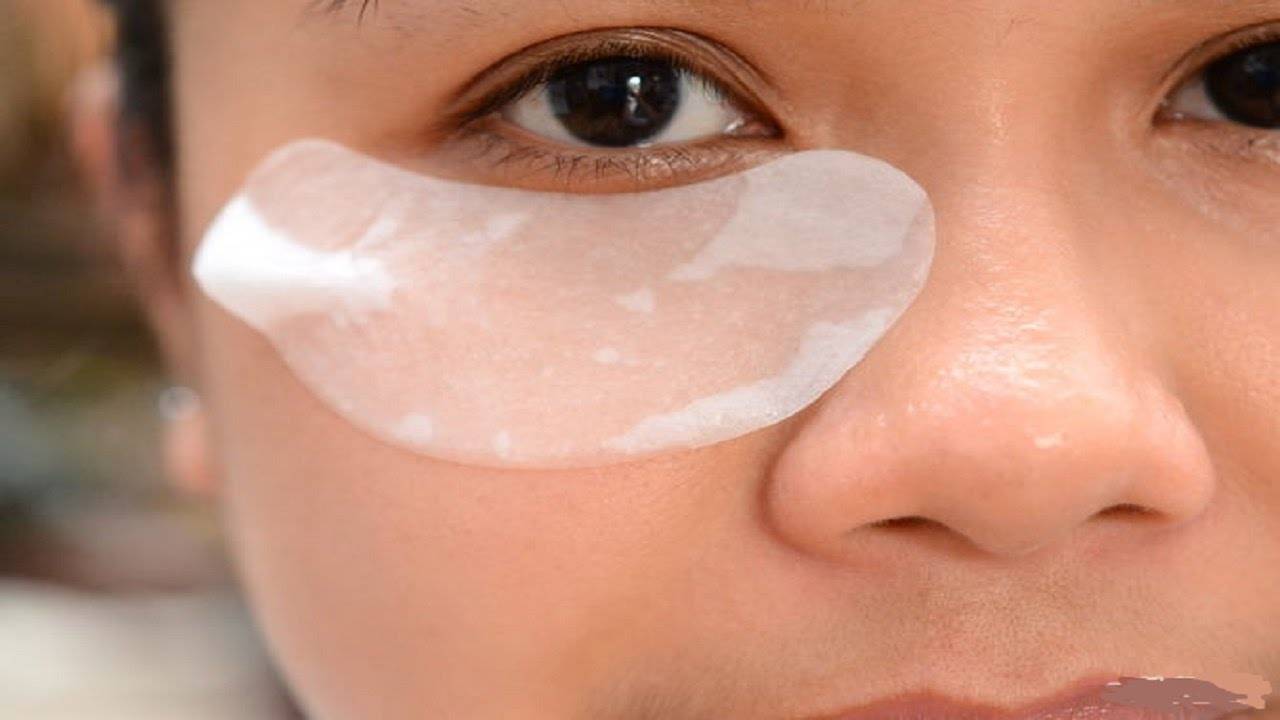
Healthline only shows you brands and products that we stand behind.
Our team thoroughly researches and evaluates the recommendations we make on our site. To establish that the product manufacturers addressed safety and efficacy standards, we:
- Evaluate ingredients and composition: Do they have the potential to cause harm?
- Fact-check all health claims: Do they align with the current body of scientific evidence?
- Assess the brand: Does it operate with integrity and adhere to industry best practices?
We do the research so you can find trusted products for your health and wellness.
Read more about our vetting process.
Was this helpful?
Eyelid bumps are painful, red lumps at the edge of the eyelid, typically where the lash meets the lid. Bacteria or a blockage in the eyelid’s oil glands cause most eyelid bumps.
Eyelid bumps are often harmless and don’t always require medical treatment. They often go away on their own or with basic home care.
But if an eyelid bump becomes increasingly painful, doesn’t respond to home treatments, or interferes with your vision, you may want to talk with a doctor about ways to manage your symptoms or see whether you have a more severe problem.
There are three types of common eyelid bumps. The type and underlying cause of your eyelid bump will determine the best course of treatment.
Styes
A stye is the most common type of eyelid bump. Styes occur when bacteria get into the oil glands of the eyelids. A stye is a round, red bump that appears close to your eyelashes.
Styes can make your eyelid feel sore. It can also cause you to be sensitive to light and make your eye watery or feel itchy. It typically takes a few days for a stye to form, and you may have more than one at a time.
Chalazion
A chalazion is an inflammatory lesion that occurs when the oil-producing glands or tear glands in the eyelids become blocked. A chalazion usually grows further on your eyelid than a stye.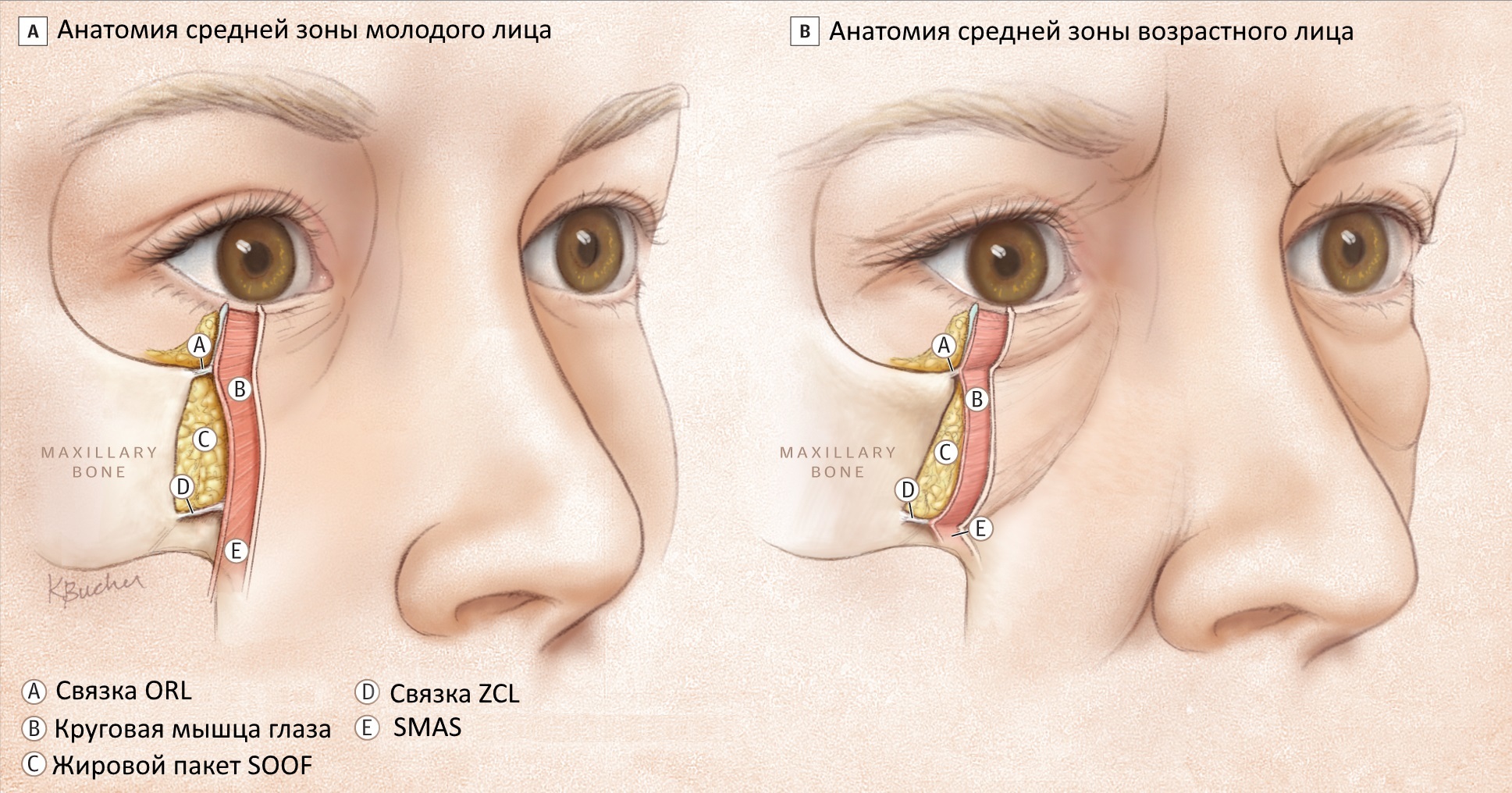
It’s painless in most cases and often goes away with home or over-the-counter treatment. It can interfere with your vision depending on where it grows and how big it gets.
Xanthelasma
Xanthelasma are harmless yellow bumps that occur when fats build up underneath the skin. They most commonly affect people ages 35 to 55 years old. In some cases, the bumps indicate high cholesterol levels.
Most eyelid bumps appear as red or skin-colored lumps, typically along the edge of the eyelid. Sometimes they can be tender. Other symptoms include red, watery eyes, a gritty, itchy sensation in the eye and sensitivity to light.
Although most eyelid bumps are mild or harmless, some can indicate a more severe condition. Consider seeing a doctor if any of the following occur:
- you’re having trouble seeing
- your eyes are extremely watery
- there’s copious discharge from your eye
- the white part of your eye changes color
- your eyes hurt even in low lighting
- your eyelid bump bleeds, gets worse, grows very big, or is very painful
- your eyelid is scaly, crusty, or red, which can indicate an infection
- your eyelid has blisters, which can indicate an infection
If a stye or chalazion doesn’t go away over time with home care, a doctor can determine whether it’s a more severe condition and discuss treatment options.
Styes occur when bacteria enter and inflame your oil glands.
Your risk of having styes increases if you have blepharitis, or inflammation of the eyelash follicles.
A chalazion can form when the oil glands in your eyelids are blocked. Styes that don’t drain can turn into chalazia.
Xanthelasma occur when you have collections of fat just below the skin’s surface. They sometimes indicate an underlying condition that can cause high cholesterol, such as diabetes. They can also form without a connection to any medical conditions.
A doctor can diagnose a stye or chalazion. Depending on the bump’s location, the doctor may quickly flip your eyelid over to take a closer look. No other tests are necessary unless there’s a concern that you may have a different medical problem.
Home care
Trying to squeeze or pop a stye or chalazion can increase your risk of infection and spread bacteria to your other eye. You can treat a stye at home by holding a warm compress on it for 10 minutes up to 4 times a day.
Heat and compression can help drain the stye, loosen blockages in the oil gland, and aid healing.
Xanthelasma don’t require home care.
Medical care
A doctor may need to drain the infected fluid if you have a large stye. If you keep getting styes or have ones that won’t go away, a doctor might prescribe an antibiotic cream for your eyelid.
Surgery may be an option if you have a large chalazion that doesn’t go away on its own. A doctor might give you antibiotic eye drops before and after surgery to treat or prevent infection. This is usually done in the doctor’s office. Anti-inflammatory steroid injections can relieve swelling.
Xanthelasma don’t need treatment, but you may wish to remove it if the appearance bothers you.
Options include:
- laser or radio-frequency ablation
- a chemical peel
- cryotherapy
- surgery
Drugs that affect the entire body — such as probucol, an antioxidant, and alirocumab, an anticholesterol therapy — have shown promise, but more research is needed.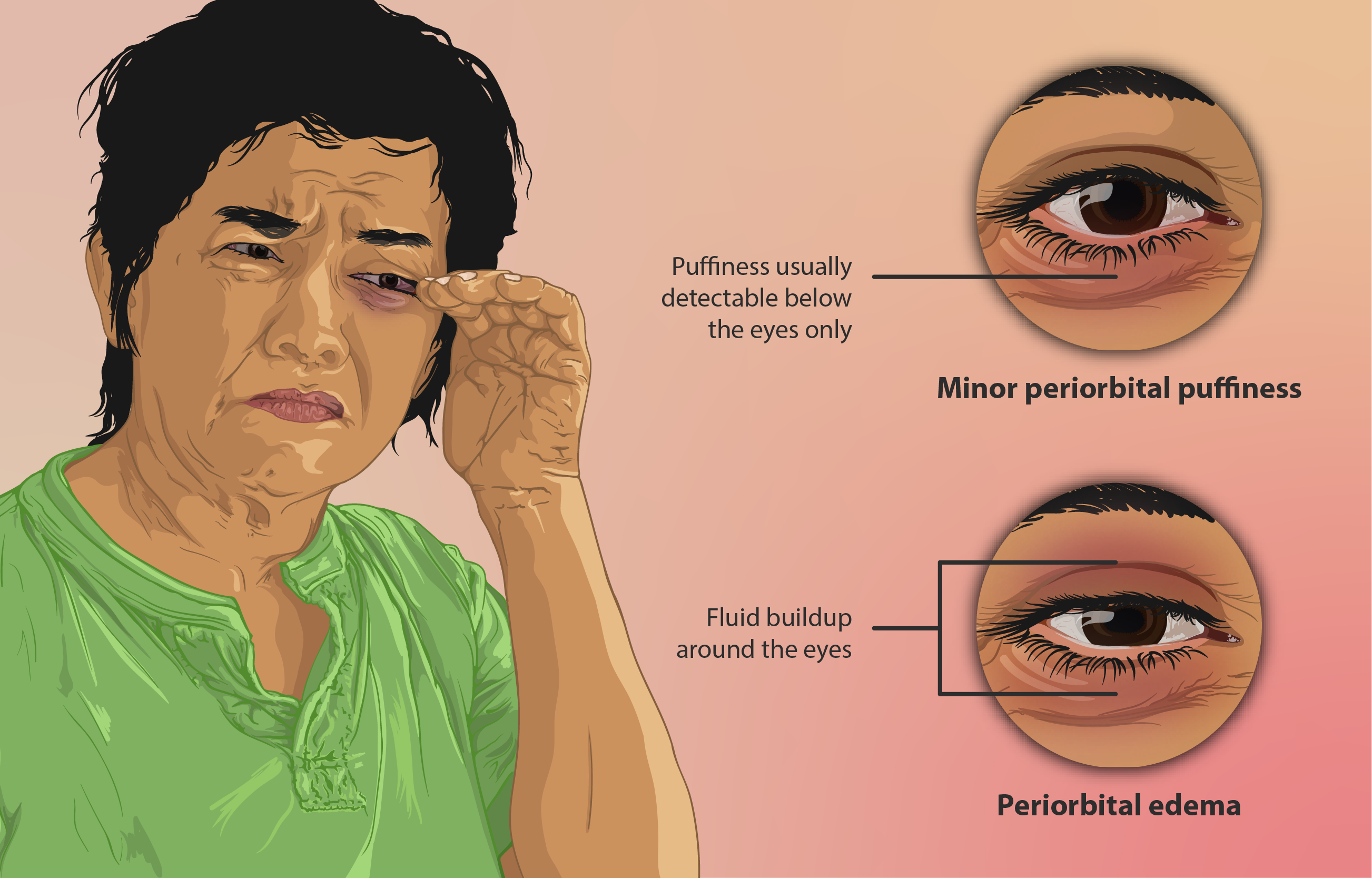
Styes usually heal on their own after draining, which can take a few days to a week. Call a doctor if the stye doesn’t go away within 1 to 2 weeks. You might also get more styes after the initial one heals.
A chalazion usually disappears within a few weeks or months when treated at home. Still, you may want to tell a doctor if the chalazion keeps getting bigger or isn’t improving with warm compresses after a couple of weeks.
Xanthelasma are harmless, but you should talk with a doctor about testing for underlying conditions. If you have one removed, there’s a high chance it will return.
You can find a primary care doctor in your area using the Healthline FindCare tool.
Practicing good hygiene can help reduce your risk of getting a stye. You can prevent the spread of bacteria with regular handwashing. Also, try not to touch your eyes until you’ve washed your hands with hot, soapy water.
You can help prevent chalazia by rinsing your eyelids twice daily with warm water and mild soap if you have blepharitis. It would help if you also put a warm compress on your eyelid as soon as it feels irritated.
It would help if you also put a warm compress on your eyelid as soon as it feels irritated.
Controlling your cholesterol levels by eating a balanced diet and maintaining a moderate weight might help prevent xanthelasma, which can result from high cholesterol levels.
Eyelid edema – description, causes, symptoms, diagnosis and treatment
Many of us have experienced eyelid edema at least once in our lives. This unpleasant symptom can occur against the background of sleep disturbance and malnutrition. Sometimes it indicates the development of diseases of the eyes or other organs and systems. How eyelid edema manifests itself, what are its causes, what disorders cause this symptom, how to cope with puffiness – we tell in this article.
Symptoms of swelling
Edema on the eyelids is the accumulation of fluid in loose connective tissue. Puffiness can be observed both in one eye and in both, both on the lower eyelids and on the upper ones. The main symptom is swelling. There may be no other manifestations, or there may be associated symptoms.
There may be no other manifestations, or there may be associated symptoms.
So, inflammatory edema, as a rule, is accompanied by reddening of the eyelids, a local increase in temperature, the eyelids may hurt, and discharge may appear on the reddened eyes and eyelids. For non-inflammatory edema, on the contrary, pallor of the skin is characteristic, swelling appears in the morning, they are often associated with kidney disease.
Allergic edema is accompanied by redness of the eyelids, sometimes with rashes, as well as itching, profuse lacrimation, and discharge from the eyes. With life-threatening Quincke’s edema, severe swelling is observed not only on the eyelids, but also on the entire face and neck. If you notice these symptoms in yourself or in loved ones, immediately consult a doctor – Quincke’s edema can provoke respiratory arrest and coma.
Puffiness on the eyelids can be combined with other general symptoms, such as fever, tachycardia, swollen lymph nodes, coughing, sneezing, rashes on the face, scalp, swelling of other parts of the body.
Only a specialist can determine the cause of eyelid edema. Let’s take a look at some of the options below.
Non-pathological causes of edema
Edema can be caused by the wrong lifestyle. For example, they arise due to excessive visual stress, including from many hours of continuous work at the computer.
Sleep disruption can also lead to eyelid puffiness. In this case, swelling appears in the morning. In addition, the symptom leads to malnutrition – the abuse of salty, smoked, fatty foods, especially before bedtime. Salt retains fluid in the body, as a result, the eyelids swell in the morning. Non-compliance with the drinking regimen and excessive alcohol intake also lead to swelling. Even the wrong posture during sleep (when the head is lower than the body or much higher) can cause swelling of the eyelids and the entire face.
Other non-pathological causes of swelling can be:
prolonged crying;
weather conditions: extreme heat can cause improper distribution of fluid in the body;
insect bites – in this case, swelling is accompanied by itching and redness;
poor-quality make-up removal;
tattoo on the eyelids or other injuries;
hereditary features of the structure of the eyelids.

Diseases causing swelling of the eyelid
Sometimes swelling on the eyelids appears due to diseases – eye or general. So, this symptom occurs with the following ophthalmic ailments:
Blepharitis. This is inflammation on the eyelids, namely on their edges. Blepharitis, depending on the causes, is simple, infectious, allergic, demodectic, meibomian, seborrheic, and due to rosacea. Each type of disease manifests itself in its own way, but swelling and redness are a common symptom for all. Also, on the ciliary edge, as a rule, discharge accumulates and dries up. Blepharitis usually appears on the eyelids of both eyes.
Conjunctivitis. Inflammation of the conjunctiva – the mucous membrane that covers the eye and eyelid from the inside – can also be of different types: allergic, bacterial, viral. Usually, with this disease, the mucous membrane turns red and swells, the patient is worried about lacrimation, discharge, sensation of a foreign body and burning in the eye area.

Barley. Acute inflammation of the sebaceous glands or ciliary follicles is manifested first by a small red swelling on the lower or upper eyelid, and then by a dense ball formed with a yellowish purulent head. Associated symptoms – itching, tingling sensation, pain, profuse lacrimation. As a rule, after a few days, the abscess opens on its own, and the disease recedes.
Halazion. This disease at an early stage resembles barley, with the difference that the rounded swelling with chalazion does not hurt. Inflammation of the meibomian gland duct most often covers one, usually the lower eyelid. The disease does not go away on its own and requires medical and sometimes surgical treatment.
Local allergic reaction. Eye allergies can arise from the use of poor-quality or expired cosmetics, under the influence of pollen or animal saliva. Puffiness appears more often on both eyelids, sometimes rashes join it, the eyes turn red, watery, itchy, there may be sneezing and a runny nose.

Preseptal (periorbital) phlegmon. This infectious disease usually affects one eyelid and nearby tissues. Phlegmon occurs against the background of infection of wounds, or the spread of infection from the nose or mouth. The eyelid darkens, swells, hurts, the palpebral fissure narrows.
Thrombosis of the cavernous sinus. This rare condition is caused by bacterial sinusitis or boils in the vestibule of the nose. The disease is first unilateral, then bilateral. Its symptoms are: severe headache or pain in the face, fever, paralysis of the eye muscles, bulging eyes and swelling of the eyelids.
When general diseases become the cause of swelling, the patient complains of symptoms affecting not only the eye and head area, but also other organs. These diseases include:
SARS. Respiratory infections can cause swelling. During illness, the work of the lacrimal glands increases, respectively, the flow of fluid increases, which causes swelling.
 Other symptoms of SARS are probably familiar to everyone: runny nose, sneezing and coughing, watery eyes, fever, sore throat, muscle pain, weakness.
Other symptoms of SARS are probably familiar to everyone: runny nose, sneezing and coughing, watery eyes, fever, sore throat, muscle pain, weakness.Seborrheic dermatitis. Inflammatory disease of the scalp, face, chest is manifested by red itchy and flaky spots. Seborrheic dermatitis in a mild form causes dandruff, in severe form – profuse rashes on all parts of the body rich in subcutaneous fat. Eruptions on the face can lead to seborrheic blepharitis, which we mentioned above.
Kidney diseases. Many disorders (pyelonephritis, glomerulonephritis) in the work of these organs lead to swelling – first on the eyelids, on the face, then on the legs and ankles, hands and even the stomach can also swell. The symptom occurs in the morning, the skin in swollen areas does not change color, it can only be slightly paler. Kidney disease is often accompanied by a decrease in the amount of urine, back pain, sometimes headaches and weakness.
Diseases of the cardiovascular system.
 Heart failure leads to swelling of the face and blanching of the skin, but these symptoms first affect the legs, then the abdomen, and only lastly the face and hands. With pathologies of the cardiovascular system, puffiness occurs not in the morning, but in the evening.
Heart failure leads to swelling of the face and blanching of the skin, but these symptoms first affect the legs, then the abdomen, and only lastly the face and hands. With pathologies of the cardiovascular system, puffiness occurs not in the morning, but in the evening.Diseases of the thyroid gland. The cause of puffiness of the eyes and the entire face may be hypothyroidism (lack of thyroid hormones). Other symptoms of this condition are weakness, drowsiness, weight gain, loose skin, loss of appetite, constipation, menstrual irregularities in women, and decreased sex drive in men.
Pregnancy can also cause swelling – both hormonal changes and fetal pressure on the kidneys in the third trimester.
Here are just some of the conditions that provoke swelling of the eyes. An accurate diagnosis can only be made by a specialist after a comprehensive diagnosis.
What to do if swelling appears
If swelling in the eyes appears in the morning and disappears on its own during the day, and other symptoms from the organs of vision and other systems do not bother you, take a closer look at your lifestyle.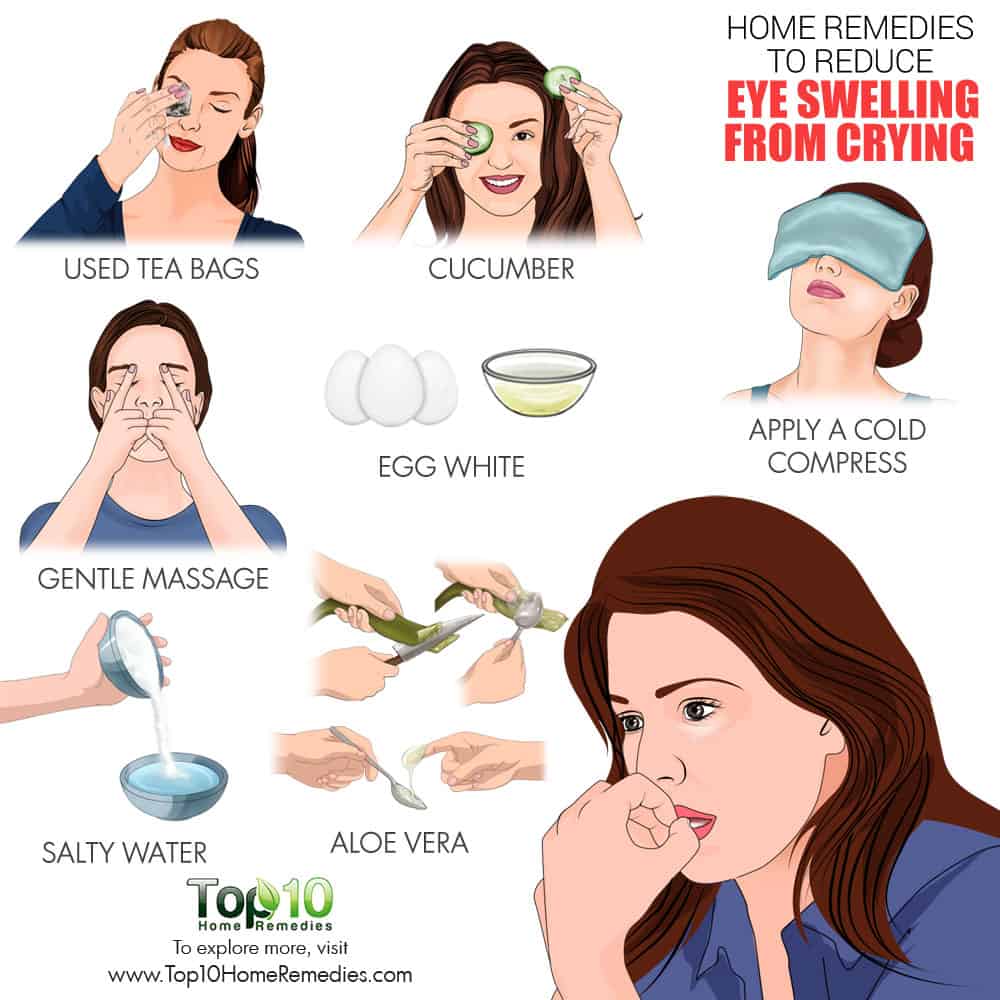 You may need to adjust your diet, work or sleep patterns. Cool compresses and facial massage will help reduce puffiness and look fresher in the morning.
You may need to adjust your diet, work or sleep patterns. Cool compresses and facial massage will help reduce puffiness and look fresher in the morning.
If you find other manifestations of eye diseases in addition to puffiness, contact an ophthalmologist! The doctor will take an anamnesis, conduct an examination, a hardware examination. If an allergy is suspected, tests to identify the allergen may be needed. If a specialist suspects demodectic blepharitis, a scraping from the eyelid will be done.
Based on the results of the examination, the ophthalmologist voices the causes of swelling, makes a diagnosis and prescribes treatment. Most often, conservative methods are sufficient – local or oral administration of drugs. During the treatment of ophthalmic diseases, it is important to observe eye hygiene – remove the discharge in time with cotton swabs or discs dipped in saline.
If you have found symptoms of common diseases that provoke swelling, seek the advice of a therapist. He will collect an anamnesis, prescribe urine and blood tests and, based on their results, will send you to a narrow specialist – a nephrologist, cardiologist or endocrinologist. After the diagnosis is made, the doctor will prescribe the appropriate treatment.
He will collect an anamnesis, prescribe urine and blood tests and, based on their results, will send you to a narrow specialist – a nephrologist, cardiologist or endocrinologist. After the diagnosis is made, the doctor will prescribe the appropriate treatment.
Remember that in no case should you engage in self-diagnosis and self-treatment. Folk remedies and uncontrolled intake of pharmaceutical preparations can aggravate the situation. In addition, by postponing a visit to the doctor, you may miss the most favorable moment to start therapy. Timely competent treatment increases the chances of a full recovery.
To prevent the development of ophthalmic and general diseases, strengthen the immune system and do not forget to undergo preventive examinations with doctors.
And last time we wrote about how to replace the lens solution.
causes, symptoms and treatments
Redness of the eyes and swelling of the eyelids can indicate a variety of health problems, from allergies and fatigue to serious infections and diseases. Find out what causes these symptoms and how they can be treated and prevented.
Find out what causes these symptoms and how they can be treated and prevented.
Redness of the eyes and swelling of the eyelids can lead to serious illnesses that must be treated professionally and promptly. Often, redness of the eyes is accompanied by itching and irritation, and swelling of the eyelids can lead to visual impairment and pain.
There are many factors that can cause redness of the eyes and swelling of the eyelids. They can be related to allergies, infection, fatigue or overwork, stress, injury, and other causes. At the same time, symptoms can appear in one or both eyes and require special attention from doctors.
In this article, we will tell you about the exact identification of the symptoms and causes of redness of the eyes and swelling of the eyelids, and also consider in detail the various methods and treatments that can help to quickly and effectively eliminate these ailments.
External causes of eye redness and eyelid swelling
Very often redness of the eyes and eyelid swelling appear due to external factors.
- Allergy. Dust, pollen, smoke, lint, animal dander and other allergens can cause red eyes and eyelid swelling. Some people suffer from seasonal allergies, such as hay fever, where symptoms may only appear at certain times of the year.
- Dry eyes. Prolonged computer use or reading can cause dry eyes, which can cause redness and swelling of the eyelids.
- Sun and wind exposure. Prolonged exposure to the sun or strong winds can irritate the skin around the eyes, causing redness and swelling of the eyelids.
- Make-up and cosmetics. Some makeup products can cause allergic reactions, which can lead to redness and swelling of the eyelids. In addition, the use of outdated or expired cosmetics can also cause irritation and redness of the eyes.
If the redness of the eyes and swelling of the eyelids persist for a long time and the symptoms become more intense, a doctor should be consulted.
Related videos:
Internal causes of eye redness and eyelid swelling
Eye redness and eyelid swelling can occur due to internal factors:
- Allergic reactions. Swelling and redness of the eyes can be caused by a reaction to allergens such as dust, plant pollen, houseplants, washing powder, etc.
- Eye infections. Infection with bacteria or viruses can lead to redness and swelling of the eyelids. Some known infections of the eye include dacryocystitis, conjunctivitis, and keratitis.
- Eyelid drooping. As the lower eyelid droops, lymph stasis can occur, leading to swelling and redness of the eyes.
- General diseases. People suffering from diseases such as migraine, stroke, hypertension, diabetes, etc. may experience eye problems, including redness and swelling of the eyelids.

If the redness of the eyes and swelling of the eyelids do not disappear within a few days, be sure to consult a doctor for diagnosis and treatment.
Q&A:
What causes redness of the eyes and swelling of the eyelids?
Redness of the eyes and swelling of the eyelids can be caused by a variety of causes, including allergic reactions, infectious diseases, trauma, and other factors.
What are the symptoms associated with redness of the eyes and swelling of the eyelids?
Redness of the eyes and swelling of the eyelids are often associated with discomfort and itching of the eyes, watering, possibly double vision or blurring.
What is conjunctivitis and how is it treated?
Conjunctivitis is an inflammation of the conjunctiva, the outer layer of the eye. Treatment depends on the cause of the inflammation and may include eye drops, antibiotics, or antivirals.
What treatment is recommended for an allergic reaction resulting in redness of the eyes and swelling of the eyelids?
For an allergic reaction, treatment may include antihistamines or eye drops, such as those containing antihistamines, steroids, or urea. If symptoms worsen, a doctor should be consulted.
If symptoms worsen, a doctor should be consulted.
What precautions can be taken to prevent redness of the eyes and swelling of the eyelids?
Prevention of eye redness and eyelid swelling may include proper eye care, avoidance of contact with allergens, including dust and smoke, and use of safety goggles when working with chemicals or when playing sports.
Can redness of the eyes and swelling of the eyelids be caused by insufficient sleep?
Yes, insufficient sleep can lead to redness of the eyes and swelling of the eyelids, since insufficient rest can lead to eye fatigue and constriction of blood vessels. Getting adequate rest and sleep is recommended to prevent symptoms.
What causes swelling of the eyelids in the morning?
Eyelid swelling in the morning can be caused by insomnia, lack of sleep, an allergic reaction to dust or nutrients consumed before bed, a drinking regimen that leads to fluid retention, and infectious disease or injury.
Which diseases can lead to redness of the eyes and swelling of the eyelids
Conjunctivitis is an inflammatory disease of the mucous membrane of the eyeball and eyelids, which can lead to redness of the eyes and swelling of the eyelids. Conjunctivitis is usually caused by viruses, bacteria, or allergens. Depending on the cause of conjunctivitis, treatment may include antibiotics, antivirals, or antihistamines.
Dacryoadenitis is an inflammatory disease of the lacrimal gland that can lead to redness of the eyes and swelling of the eyelids. It is usually caused by an infection, and in some cases may be associated with diseases of the immune system. Treatment of dacryoadenitis includes the use of antibiotics and other anti-inflammatory drugs.
Redness of the eyes and swelling of the eyelids may also be caused by an allergic reaction . Allergic conjunctivitis can be caused by a variety of allergens such as pollen, lint, dust, animals, and certain chemicals. Treatment includes the use of antihistamines and agents to reduce inflammation.
Treatment includes the use of antihistamines and agents to reduce inflammation.
In addition, diseases such as glaucoma , viral conjunctivitis , keratitis , eye pollution and others can cause redness of the eyes and swelling of the eyelids. In some cases, you may need to consult a specialist for the correct diagnosis and treatment.
What symptoms accompany redness of the eyes and swelling of the eyelid
Redness of the eyes and swelling of the eyelid can be signs of various diseases. For an accurate diagnosis, you need to consult an ophthalmologist. However, there are several symptoms that often accompany redness of the eyes and swelling of the eyelid.
- Lachrymation – an increased amount of tears may be a sign of inflammation of the conjunctiva.
- Itching and burning of the eyes – these symptoms may indicate an allergy to some irritant.
- Photophobia is a reaction to bright light.
 It is often found in conjunctivitis and other inflammatory diseases.
It is often found in conjunctivitis and other inflammatory diseases.
Eye redness and eyelid swelling can also be caused by other causes: infection, trauma to the eye or face, improper use of contact lenses, etc. If these symptoms appear, you should consult a doctor for diagnosis and treatment.
How to correctly diagnose eye redness and eyelid swelling
Eye redness and eyelid swelling are common symptoms of various diseases of the eyeball and its circumference. However, before starting treatment, it is necessary to accurately establish the patient’s diagnosis, which can only be achieved with proper diagnosis.
The doctor will definitely conduct a visual examination, and, if necessary, conduct additional studies. Depending on the established cause of the symptoms, the following diagnostic procedures may be prescribed:
- blood and urine test;
- bacteriological examination;
- ultrasound;
- computed tomography;
- magnetic resonance imaging;
- fundus biomicroscopy;
- electrophysiological examinations;
- intraocular pressure measurement.

More accurate identification of the causes of redness of the eyes and swelling of the eyelids allows you to choose the most effective treatment. Therefore, if such symptoms occur, it is necessary to contact a qualified specialist in the field of ophthalmology.
What are the treatments for redness of the eyes and swelling of the eyelids
Treatment for redness of the eyes and swelling of the eyelids depends on their causes.
If the cause of redness of the eyes is associated with allergies or inflammation, then you should consult a doctor who will prescribe drops or ointments for the eyes or give recommendations on folk methods.
If the redness of the eyes is due to fatigue or prolonged work at the computer, you need to take breaks and reduce eye strain. Some eye exercises, such as eyelid massage, can help relieve fatigue and prevent redness.
Swelling of the eyelids can also be caused by fatigue or sleep disturbance. Cold compresses, such as ice packs or wet tea bags, can be used to reduce swelling. Other methods, such as massage or eyelid exercises, can help improve circulation and reduce swelling.
Cold compresses, such as ice packs or wet tea bags, can be used to reduce swelling. Other methods, such as massage or eyelid exercises, can help improve circulation and reduce swelling.
Eye redness and eyelid swelling treatment: products and preparations
Eye redness and eyelid swelling can be caused by various causes, such as allergies, infection, eye fatigue, dryness, and others.
Redness of the eyes and swelling of the eyelids can be treated with various agents and preparations. One of the most popular drugs for the treatment of redness of the eyes is Vizin or Optiva drops. They are able to quickly eliminate the redness of the eyes and reduce swelling. You can also use drops “Arti-Sens” or “Systane” to eliminate dry eyes.
Creams and gels can be used to relieve swelling of the eyelids. For example, Badyan, an eye gel containing natural ingredients, can quickly eliminate eyelid edema. You can also use “Leopoldovsky balm” – a cream that relieves eye fatigue and reduces swelling.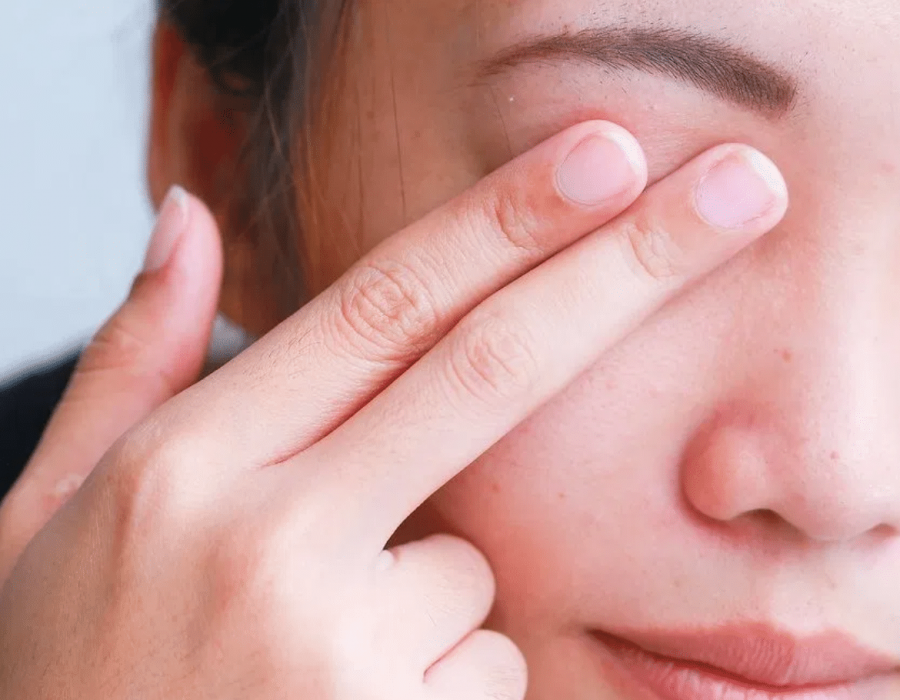
Do not forget about traditional methods of treatment, which can also help. The generally accepted method is the use of a cold compress. To do this, you just need to apply a compress with ice water to your eyes or use an ice bag.
- Vizin or Optiva drops
- Arti-Sens or Systane drops
- Star anise eye gel
- Leopoldovsky balm cream
using any means and preparations, it is necessary to consult a doctor and get recommendations on their use.
Simple home remedies for red eyes and eyelid swelling
Red eyes and eyelid swelling can be caused by various causes such as allergies, conjunctivitis, eye fatigue, etc. If you experience these symptoms, you can try simple home remedies before going to the doctor.
1. Chamomile tea infusion
Chamomile can be used both internally and externally. An infusion of chamomile tea has anti-inflammatory properties that can help with eye redness and eyelid swelling. To do this, you need to brew a teaspoon of chamomile in a glass of boiling water, let it brew and cool. Then moisten cotton pads or gauze napkins in this dissolution and apply on closed eyes for 10-15 minutes.
To do this, you need to brew a teaspoon of chamomile in a glass of boiling water, let it brew and cool. Then moisten cotton pads or gauze napkins in this dissolution and apply on closed eyes for 10-15 minutes.
2. Cucumber compress
Cucumber has cooling properties that can help reduce puffiness and redness in the eyes. You need to cut the cucumber into thin circles and place them on closed eyes for 15 minutes.
3. Herbal eye drops
Herbs such as mint, basil and rosemary can be used to make eye drops. For example, mint herb can be made into an infusion and used as eye drops to help soothe the eyes and reduce redness. But before using herbal eye drops, you should always consult with your doctor.
Treatments for red eyes and eyelid swelling
Cold water or ice compresses: Cooling the eyelids helps constrict blood vessels and reduce swelling. Take a soft cloth or gauze soaked in cold water, or wrap ice in a clean cloth and apply to closed eyes. Keep the compress on for about 10 minutes.
Keep the compress on for about 10 minutes.
Warm water compresses: If fatigue or strain is the cause of red eyes and eyelid swelling, warm compresses may help. Fill a bowl with warm water, soak a soft cloth or gauze in the water and apply over closed eyes for 10-15 minutes.
Eyelid massage: A gentle massage around the eyes can help relax muscles and relieve tension. Massage in a circular motion with your index and middle fingers around the outer corner of the eye and along the edges of the eyelids. Massage for about 1-2 minutes.
Special eye drops: If the redness of the eyes and eyelid swelling are caused by an allergy or infection, your doctor may prescribe special eye drops. They restore the moisture of the eye surface, reduce swelling and redness.
Good sleep: Lack of sleep can aggravate redness of the eyes and eyelid swelling. Try to improve the quality and quantity of sleep, get enough sleep, thereby reducing eye strain and swelling.
How to Prevent Red Eyes and Eyelid Swelling
Red eyes and eyelid swelling can be caused by many things, from allergies to eye fatigue. But there are ways to help you prevent their occurrence.
1. Protect your eyes from the environment. Use safety goggles or sunglasses in bright sunshine and in various types of wind and dust. Avoid close contact with smoke such as tobacco smoke.
2. Practice proper eye hygiene means you should wash your hands often before touching your eyes and also remove make-up using special products. Do not use cosmetics that cause allergic reactions.
3. Respect your eyes – If you work at a computer for a long time, increased eye strain can lead to redness and swelling. Take breaks, pay attention to the lighting and the position of your workplace.
4. Keep Your Body Healthy — Eat foods that are rich in vitamins A, C and E and other nutrients. Avoid smoking and drinking alcohol, as these can aggravate the eye situation.
Avoid smoking and drinking alcohol, as these can aggravate the eye situation.
5. See a doctor – if you notice that the redness and swelling of the eyelids have not gone away, you need to see a specialist. He will diagnose and tell you what alternative treatments can help your eyes.
By following these simple tips, you can protect your eyes from redness and swelling, keeping them healthy.
Hygiene to avoid eye redness and eyelid swelling
Proper eye hygiene helps to avoid eye redness and eyelid swelling. It is important to observe the following rules:
- Do not rub your eyes with your hands as this promotes transmission of infection to the eyes. If there is a need to scratch your eyes, it is better to use napkins.
- Avoid eye contact with objects of all kinds as they may be a source of infection. This applies to cosmetics, contact lenses, hands and many other surfaces.
- Maintain contact lens hygiene .
 If you use contact lenses, make sure you store and clean them properly to avoid infection.
If you use contact lenses, make sure you store and clean them properly to avoid infection. - When using the computer, take regular breaks to rest your eyes. Don’t forget to blink as it helps keep your eyes moist.
- Avoid overly elaborate eye makeup , especially if the eyes are already red and swollen. Don’t forget to remove your makeup before bed.
Good hygiene will help to avoid redness of the eyes and swelling of the eyelid, as well as maintain eye health for many years.
How to eat right to prevent redness of the eyes and swelling of the eyelids
Proper nutrition is one of the main factors in the prevention of redness of the eyes and swelling of the eyelids. Certain foods help strengthen blood vessels and reduce inflammation, thereby reducing the risk of these problems.
One of the healthiest foods is red fish, which contains omega-3 fatty acids that reduce inflammation. It is also recommended to consume fresh vegetables and fruits containing antioxidants such as vitamin A and C, which help to strengthen the vascular wall of the eyes.
It is important to eliminate salty, fatty and spicy foods from your diet, which can cause swelling of the eyelids and aggravate redness of the eyes. You should also drink enough fluids to avoid dehydration, which can also contribute to swelling and redness of the eyes.
If symptoms of eye redness and swelling appear, it is recommended to reduce the consumption of alcohol and caffeine, which can worsen the condition of the eyes, and consult a doctor immediately. He may prescribe a special diet or drugs to treat eye problems.
- Maintain your diet with fresh antioxidant-rich fruits and vegetables
- Reduce your intake of fatty, salty and spicy foods
- Drink plenty of fluids
- Reduce your caffeine and alcohol intake
How to properly use eye cosmetics to avoid redness and swelling of the eyelids
Eye cosmetics are an essential part of daily skin care. However, their misuse can lead to redness and swelling of the eyelids.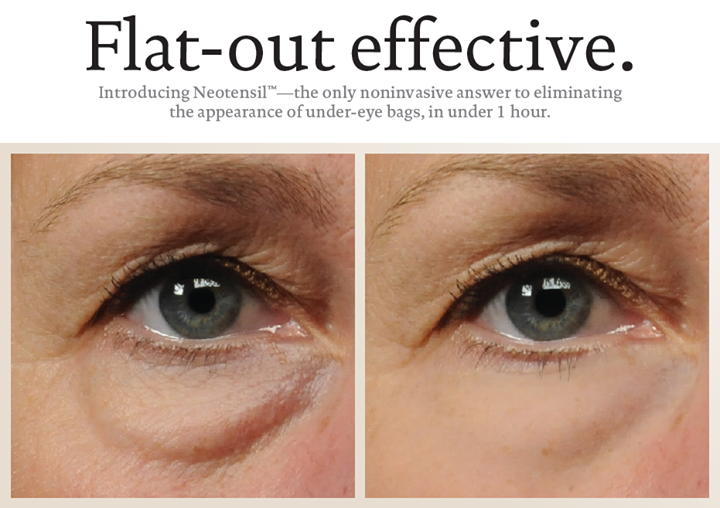 Below we share with you some tips on how to use eye makeup correctly.
Below we share with you some tips on how to use eye makeup correctly.
1. Do not use expired cosmetics
Use of expired cosmetics may cause eye and eye irritation. Therefore, before applying cosmetics, make sure that they have not expired.
2. Remove makeup before bed
Sleeping with eye makeup on can lead to bacteria and germs accumulating on the skin, which can cause redness and swelling of the eyelids. Make sure you thoroughly remove all makeup before bed.
3. Use hypoallergenic cosmetics
If you have sensitive eyelid skin or a tendency to allergic reactions, choose hypoallergenic cosmetics. It will help to avoid the appearance of redness and swelling of the eyelids.
4. Apply makeup correctly
Apply cosmetics with light and gentle movements without stretching the skin of the eyelids. This will help to avoid the appearance of brown spots and wrinkles on the skin of the face.
5. Don’t overuse makeup
Never apply multiple layers of mascara or eye shadow at one time. This can lead to discomfort and the appearance of redness and swelling of the eyelids.
This can lead to discomfort and the appearance of redness and swelling of the eyelids.
- It must be remembered that cosmetic care should be regular.
- It is better to use premium cosmetics that are more beneficial for your skin.
- Cosmetics can only be used after consultation with a dermatologist in case of any skin diseases of the eyelids or eyes.
Can contact lenses be used for redness of the eyes and swelling of the eyelids
In case of redness of the eyes or swelling of the eyelids, the use of contact lenses may worsen the situation and cause additional vision problems. First of all, wearing contact lenses can irritate the eye, which will increase the redness and swelling. Therefore, if you have these problems, it is better not to wear lenses and opt for regular glasses.
In addition, contact lenses can lead to eye infections, especially if the wearer experiences bacterial or viral conjunctivitis. Microbes that can get under the lenses can cause very serious illnesses, including loss of vision.
As a consequence, if you have redness of the eyes or swelling of the eyelids, it is best not to wear contact lenses and seek immediate medical attention. He will make a diagnosis and prescribe the appropriate treatment. In addition to treatment, some additional measures may be recommended, such as the use of special eye drops or lubricants, to reduce discomfort. In exceptional cases, when contact lenses are necessary for everyday life, you should consult your doctor about the possibility of using daily lenses.
When to see a doctor for redness of the eyes and swelling of the eyelids
Redness of the eyes and swelling of the eyelids can be symptoms of various diseases of the eyeball, eyelids or related organs. Some of these diseases are serious and can lead to poor vision or even loss of an eye.
If redness of the eyes and swelling of the eyelids are accompanied by pain, stinging, itching, severe photophobia, spotting, blurred vision, or watery eyes, seek medical attention.
Also, if redness of the eyes and swelling of the eyelids do not improve after home treatments such as ice packs, eye drops, or medicated ointments, a doctor should be consulted.
The search for the cause of redness of the eyes and swelling of the eyelids must be timely and accurate, so do not put off going to a specialist. It is very important to get a timely diagnosis and prescribe the right treatment to prevent possible complications.
How can a doctor help with redness of the eyes and swelling of the eyelids
In case of redness of the eyes and swelling of the eyelids, seek medical attention immediately. The doctor will conduct an examination, study the symptoms and determine the cause of the disease.
Depending on the identified disease, the doctor may prescribe treatment. In the event of an allergic reaction, the patient is given antihistamines and eye drops, which keep moisture in the eye and reduce eyelid swelling. If the redness of the eyes is caused by an infection, treatment includes antibiotics and eye drops to help clear the infection.
If redness of the eyes and swelling of the eyelids are caused by other factors, such as hypertension or drug intolerance, the doctor will prescribe a treatment aimed at eliminating the underlying cause of the disease.
Severe cases such as glaucoma or cataracts may require surgery. The doctor will consult and prescribe the appropriate treatment.
When to see an ophthalmologist
Redness of the eyes and swelling of the eyelids are often temporary conditions caused by tired eyes, low humidity in the room, or a reaction to an allergen. However, in some cases, these symptoms may be signs of a more serious eye health problem.
If redness and swelling are accompanied by sore eyes, decreased vision, severe sensitivity to light, or permanent spots before the eyes, this may indicate the development of diseases such as glaucoma, conjunctivitis, iridocyclitis, or even infection with urobacteria.
Also note the appearance of red dots or unnaturally thick mucus aftereffects, especially if these symptoms appear and persist for a long time.


 If you have severe allergies, working with a doctor to manage prescription medications will reduce eye swelling since it is a symptom of your allergies.
If you have severe allergies, working with a doctor to manage prescription medications will reduce eye swelling since it is a symptom of your allergies. You will develop an enlarged, red, sore area that will look like a small mound. Pain will go away first, followed by decreased swelling. A doctor’s examination is required for treatment for a chalazion because it will not go away on its own.
You will develop an enlarged, red, sore area that will look like a small mound. Pain will go away first, followed by decreased swelling. A doctor’s examination is required for treatment for a chalazion because it will not go away on its own.
 This will be accompanied by redness, pain in the eyeball, and bulging eyes. It will start in one eye and spread to the other.
This will be accompanied by redness, pain in the eyeball, and bulging eyes. It will start in one eye and spread to the other. The eyes are one of several areas where you may notice unusual swelling.
The eyes are one of several areas where you may notice unusual swelling.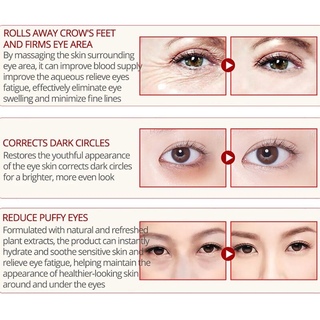
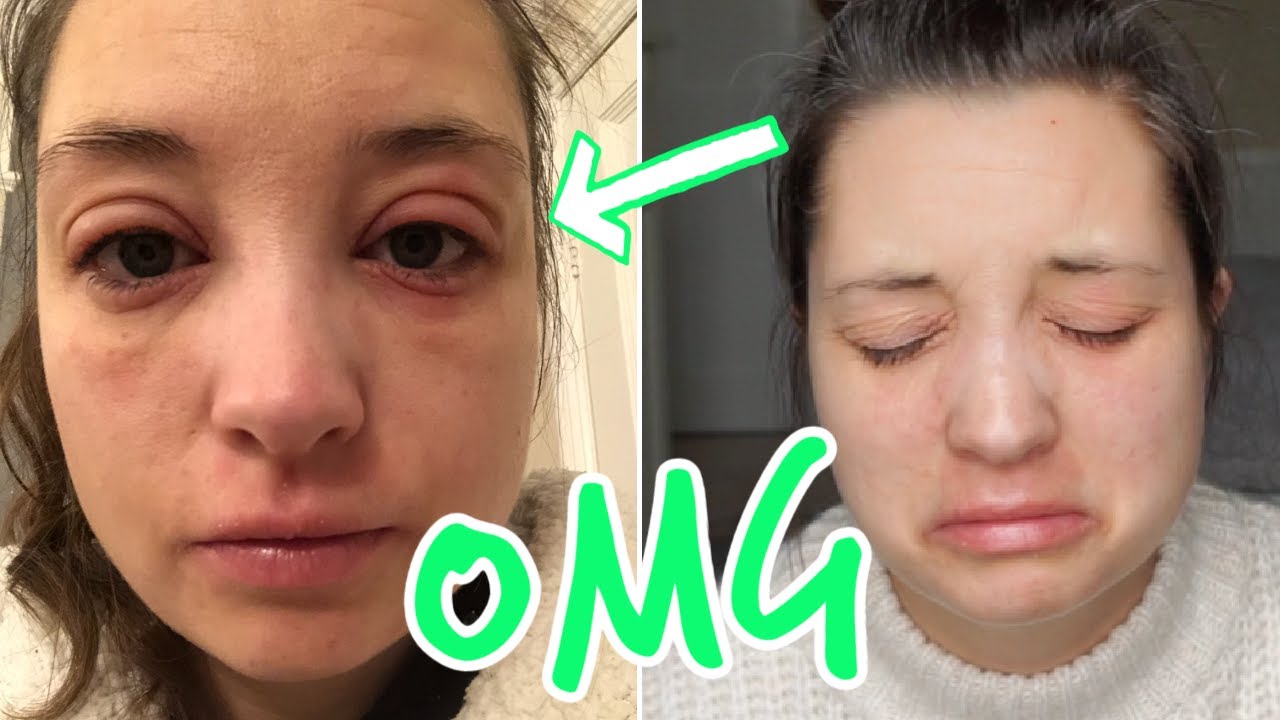


 Other symptoms of SARS are probably familiar to everyone: runny nose, sneezing and coughing, watery eyes, fever, sore throat, muscle pain, weakness.
Other symptoms of SARS are probably familiar to everyone: runny nose, sneezing and coughing, watery eyes, fever, sore throat, muscle pain, weakness.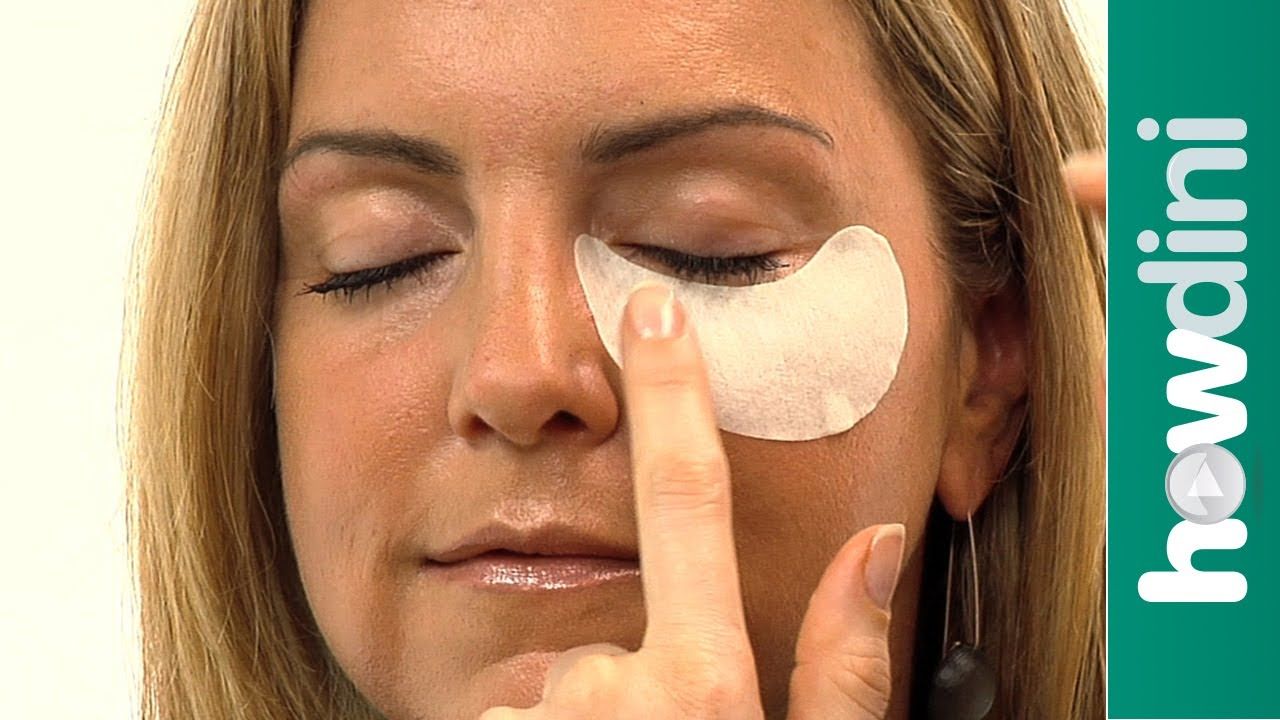 Heart failure leads to swelling of the face and blanching of the skin, but these symptoms first affect the legs, then the abdomen, and only lastly the face and hands. With pathologies of the cardiovascular system, puffiness occurs not in the morning, but in the evening.
Heart failure leads to swelling of the face and blanching of the skin, but these symptoms first affect the legs, then the abdomen, and only lastly the face and hands. With pathologies of the cardiovascular system, puffiness occurs not in the morning, but in the evening.
 It is often found in conjunctivitis and other inflammatory diseases.
It is often found in conjunctivitis and other inflammatory diseases.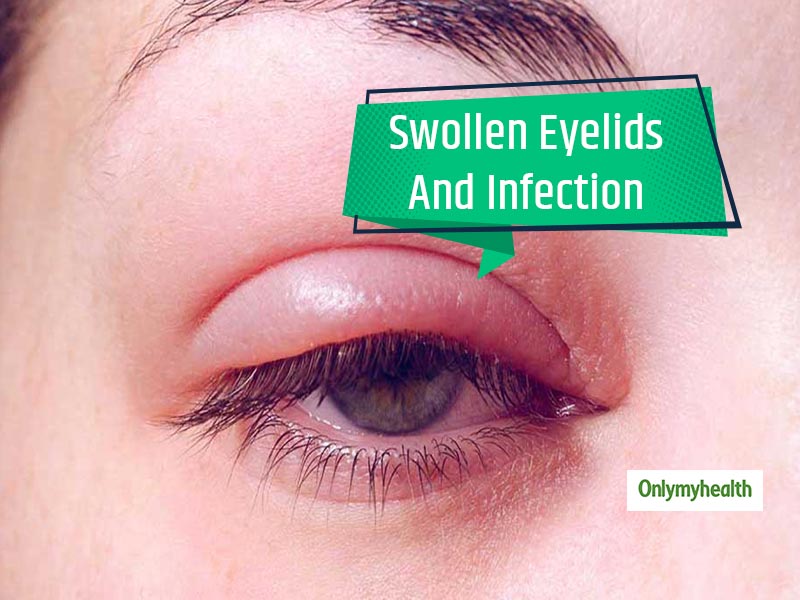
 If you use contact lenses, make sure you store and clean them properly to avoid infection.
If you use contact lenses, make sure you store and clean them properly to avoid infection.
